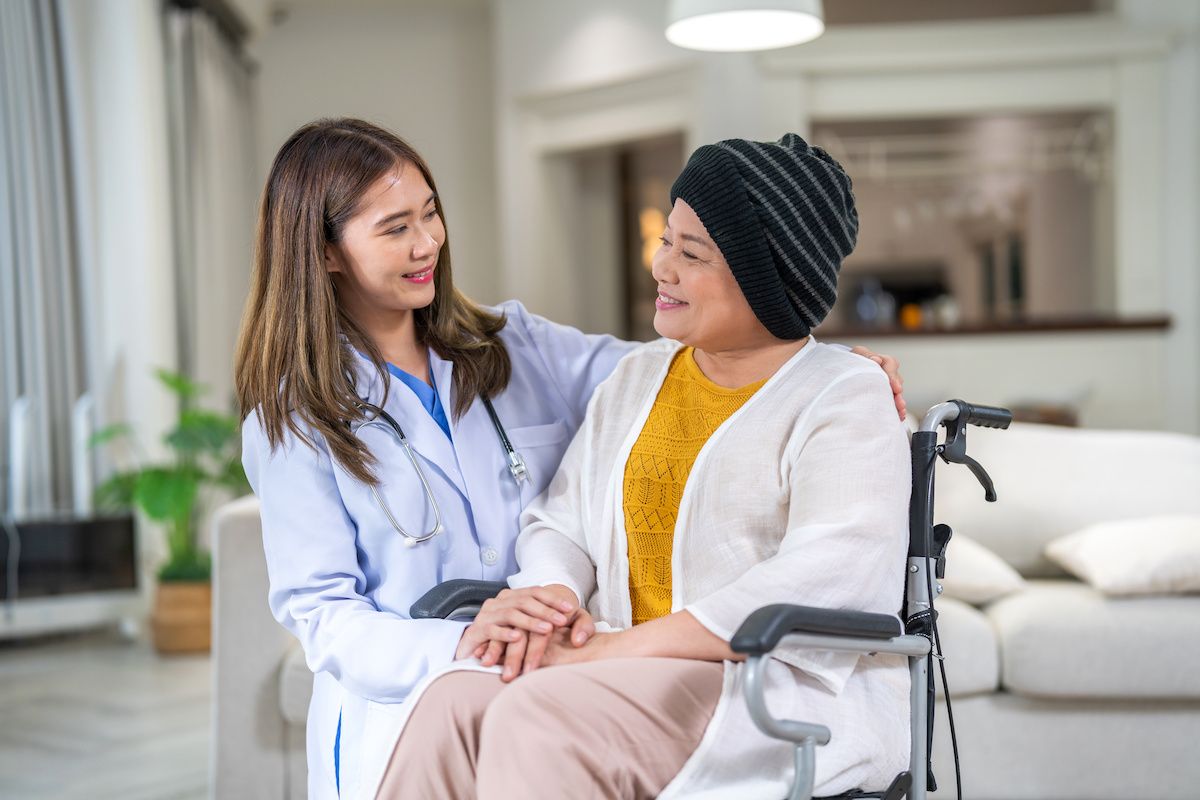- Bone Health
- Immunology
- Hematology
- Respiratory
- Dermatology
- Diabetes
- Gastroenterology
- Neurology
- Oncology
- Ophthalmology
- Rare Disease
- Rheumatology
Targeted Reimbursement Encourages Oncology Biosimilar Use
Incentivizing physicians with modest financial bonuses may seem like a small step, but in Japan’s outpatient oncology setting, it helped push trastuzumab biosimilars toward broader adoption, demonstrating how even limited reimbursement reforms can reshape prescribing behavior under the right conditions.
Reimbursement policies that prioritize biosimilars over reference products have boosted trastuzumab biosimilar use in Japan’s outpatient setting, although inconsistent results across products highlight the need for more nuanced, biosimilar-specific approaches.1
The present study was conducted to assess whether even such a modest financial incentive could effectively promote biosimilar use. | Image credit: Art_Photo - stock.adobe.com

Rising oncology drug costs have heavily strained health care budgets worldwide, and Japan is no exception—despite achieving nearly 80% market share for generics, largely small-molecule drugs, the country’s potential for further savings is limited.2 To address this, Japan has shifted its focus to biosimilars, which are typically reimbursed at a 30% discount compared with their reference products. In 2022, the government expanded a modest reimbursement incentive, offering ¥1500 (about USD $10) per prescription for up to 3 months, to outpatient oncology biosimilars.
The present study was conducted to assess whether even such a modest financial incentive could effectively promote biosimilar use—particularly for trastuzumab and bevacizumab—offering policy insights for Japan and other developed nations facing similar cost pressures.
To assess the policy’s effectiveness, researchers used a large health insurance claims database from JMDC Inc, covering about 16 million individuals in Japan. The study analyzed monthly biosimilar uptake from April 2021 to March 2023 among patients with aged 18 to 74 years who were prescribed either the reference or biosimilar versions of trastuzumab (for breast or gastric cancer) or bevacizumab (for colorectal or lung cancer). Patients receiving both biosimilar and originator drugs in the same month or treated for off-policy indications were excluded.
Using interrupted time series (ITS) analysis, a robust quasi-experimental method, the researchers measured monthly changes in biosimilar uptake before and after the policy intervention. Results showed a statistically significant 0.33% monthly increase in trastuzumab biosimilar use following the policy, while bevacizumab biosimilar use continued its preexisting upward trend without a significant policy-driven change. These findings suggest that even modest financial incentives may help promote biosimilar adoption in oncology, particularly when supported by policy design tailored to the clinical context.
Researchers assessed 36,462 outpatient claims to evaluate the impact of Japan’s April 2022 biosimilar incentive policy. For trastuzumab, there were 22,440 total claims: 11,622 in the preintervention period (April 2021-March 2022) and 10,818 in the postintervention period (April 2022-March 2023). Women accounted for 97% of these, with the majority (60% pre- and 63% postintervention) aged 50 to 69 years. Most claims (96%) were for breast cancer, and 4% were for gastric cancer.
Although biosimilar uptake was already increasing prior to Japan’s 2022 reimbursement incentives, the policy significantly accelerated adoption of trastuzumab biosimilars, suggesting a positive influence on prescribing behavior.
ITS analysis showed a significant preintervention monthly trastuzumab biosimilar uptake increase of 0.65% (95% CI, 0.48%-0.83%). Although there was a nonsignificant level change of –1.49% (95% CI, –3.37% to 0.38%) post policy, the slope increased significantly by 0.33% (95% CI, 0.07%-0.58%), resulting in a total postintervention growth rate of 0.98% per month (95% CI, 0.80%-1.16%). Subgroup analysis confirmed these findings in breast cancer, but not in gastric cancer.
In contrast, the same policy did not significantly impact bevacizumab biosimilar uptake, which continued its preexisting growth trend. This divergence may reflect differences in drug pricing dynamics; for example, bevacizumab had a larger price gap between the originator and biosimilar, allowing originator manufacturers to potentially counteract the policy’s effects through rebates.
For bevacizumab, 14,022 total claims were recorded: 6973 preintervention and 7049 post intervention. Women represented 42% before and 43% after the policy, with 72% and 73% of patients aged 50 to 69 years, respectively. Colorectal cancer accounted for 86% to 87% of claims, and lung cancer for 13% to 14%. ITS analysis showed a strong prepolicy biosimilar uptake trend of 1.56% per month (95% CI, 1.44%-1.69%). Post policy, the level change was 0.16% (95% CI, –1.52% to 1.83%), and the slope change was –0.18% (95% CI, –0.41% to 0.06%), both not statistically significant. The postpolicy monthly increase remained significant at 1.38% (95% CI, 1.17%-1.60%). Subgroup analyses for colorectal and lung cancers showed no significant changes.
Although limited by a short postintervention period and the unique context of Japan’s health care system, the study offers valuable insights for policymakers seeking cost-saving strategies through biosimilar adoption.
“Given these findings, it is crucial for policy makers to design reimbursement strategies that are specifically tailored to the characteristics of each biosimilar to optimize their effectiveness,” the authors recommended.
References
1. Mamiya H, Fukasawa T, Kawakami K. Effects of reimbursement add-on policies on trastuzumab and bevacizumab biosimilar adoption in a Japanese oncology setting. Value Health Reg Issues. 2025:46:101090. doi:10.1016/j.vhri.2025.101090
2. Izutsu KI, Ando D, Morita T, et al. Generic drug shortage in Japan: GMP noncompliance and associated quality issues. J Pharm Sci. 2023;112(7):1763-1771. doi:10.1016/j.xphs.2023.03.006
Newsletter
Where clinical, regulatory, and economic perspectives converge—sign up for Center for Biosimilars® emails to get expert insights on emerging treatment paradigms, biosimilar policy, and real-world outcomes that shape patient care.
